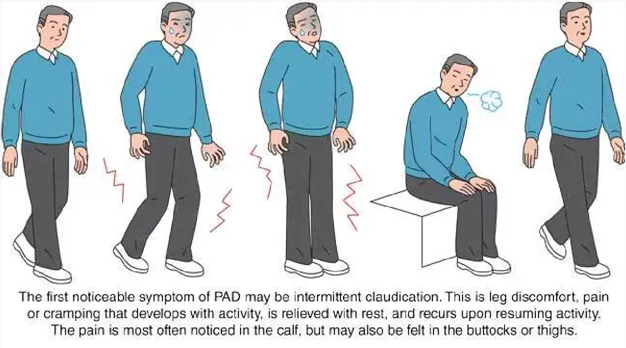The nurse is discussing discharge teaching with the client who is three (3) days post-operative abdominal aortic aneurysm repair. Which information should the nurse include in the teaching?
Notify HCP of any redness or irritation of incision.
Do not lift anything more than 20 pounds.
Inform client that there may be pain not relieved with pain medication.
Stress the importance of having daily bowel movements.
Correct Answer : A,B,C,D
The information that the nurse should include in the discharge teaching for the client who is three days post-operative abdominal aortic aneurysm repair is as follows:
Notify the healthcare provider (HCP) of any redness or irritation of the incision: This is important because redness or irritation can be signs of infection or other complications at the surgical site. Prompt reporting allows for early intervention and management.
Do not lift anything more than 20 pounds: Following abdominal aortic aneurysm repair, it is crucial to avoid heavy lifting or straining as it can put excessive pressure on the surgical site and potentially lead to complications such as incisional hernia. Restricting lifting to no more than 20 pounds helps to protect the incision and promote proper healing.
Inform the client that there may be pain not relieved with pain medication: Pain management is an essential aspect of post-operative care. However, it is important for the client to understand that complete relief of pain may not always be achievable with pain medication alone. They should be aware that mild to moderate discomfort may persist during the healing process, but severe or worsening pain should be reported to the healthcare provider.
Stress the importance of having daily bowel movements: After abdominal surgery, it is common for bowel movements to be delayed due to factors such as anesthesia, reduced activity, and pain medication. However, it is crucial for the client to maintain regular bowel movements to prevent constipation and potential complications such as bowel obstruction. The nurse should provide guidance on strategies to promote regular bowel function, such as staying hydrated, eating a balanced diet rich in fiber, and using stool softeners or gentle laxatives as directed by the healthcare provider.
Nursing Test Bank
Naxlex Comprehensive Predictor Exams
Related Questions
Correct Answer is C
Explanation
The client statement that supports the information of intermittent claudication is: "My legs get a painful cramp when I walk over 30 minutes.": Intermittent claudication is a symptom of peripheral artery disease (PAD) characterized by pain, cramping, or fatigue in the muscles of the lower extremities, typically the calves, thighs, or buttocks. This pain is usually triggered by physical activity, such as walking, and is relieved with rest. The pain is caused by inadequate blood flow and oxygen supply to the muscles due to narrowed or blocked arteries.

The other client statements do not specifically indicate intermittent claudication:
"My feet feel like I have pins and needles": This sensation of pins and needles is often associated with peripheral neuropathy, which is a condition involving nerve damage and does not directly relate to intermittent claudication.
"When I stand or sit too long, my feet swell": This statement suggests the possibility of venous insufficiency rather than intermittent claudication. Venous insufficiency involves impaired blood return from the legs to the heart and may result in swelling, aching, or heaviness in the legs.
"I get short of breath when I climb a lot of stairs": This symptom is more indicative of cardiovascular or respiratory issues, such as heart or lung disease, rather than intermittent claudication. It suggests that the client may experience exercise intolerance due to cardiopulmonary limitations.
Correct Answer is ["A","B","C","D"]
Explanation
The information that the nurse should include in the discharge teaching for the client who is three days post-operative abdominal aortic aneurysm repair is as follows:
Notify the healthcare provider (HCP) of any redness or irritation of the incision: This is important because redness or irritation can be signs of infection or other complications at the surgical site. Prompt reporting allows for early intervention and management.
Do not lift anything more than 20 pounds: Following abdominal aortic aneurysm repair, it is crucial to avoid heavy lifting or straining as it can put excessive pressure on the surgical site and potentially lead to complications such as incisional hernia. Restricting lifting to no more than 20 pounds helps to protect the incision and promote proper healing.
Inform the client that there may be pain not relieved with pain medication: Pain management is an essential aspect of post-operative care. However, it is important for the client to understand that complete relief of pain may not always be achievable with pain medication alone. They should be aware that mild to moderate discomfort may persist during the healing process, but severe or worsening pain should be reported to the healthcare provider.
Stress the importance of having daily bowel movements: After abdominal surgery, it is common for bowel movements to be delayed due to factors such as anesthesia, reduced activity, and pain medication. However, it is crucial for the client to maintain regular bowel movements to prevent constipation and potential complications such as bowel obstruction. The nurse should provide guidance on strategies to promote regular bowel function, such as staying hydrated, eating a balanced diet rich in fiber, and using stool softeners or gentle laxatives as directed by the healthcare provider.
Whether you are a student looking to ace your exams or a practicing nurse seeking to enhance your expertise , our nursing education contents will empower you with the confidence and competence to make a difference in the lives of patients and become a respected leader in the healthcare field.
Visit Naxlex, invest in your future and unlock endless possibilities with our unparalleled nursing education contents today
Report Wrong Answer on the Current Question
Do you disagree with the answer? If yes, what is your expected answer? Explain.
Kindly be descriptive with the issue you are facing.
